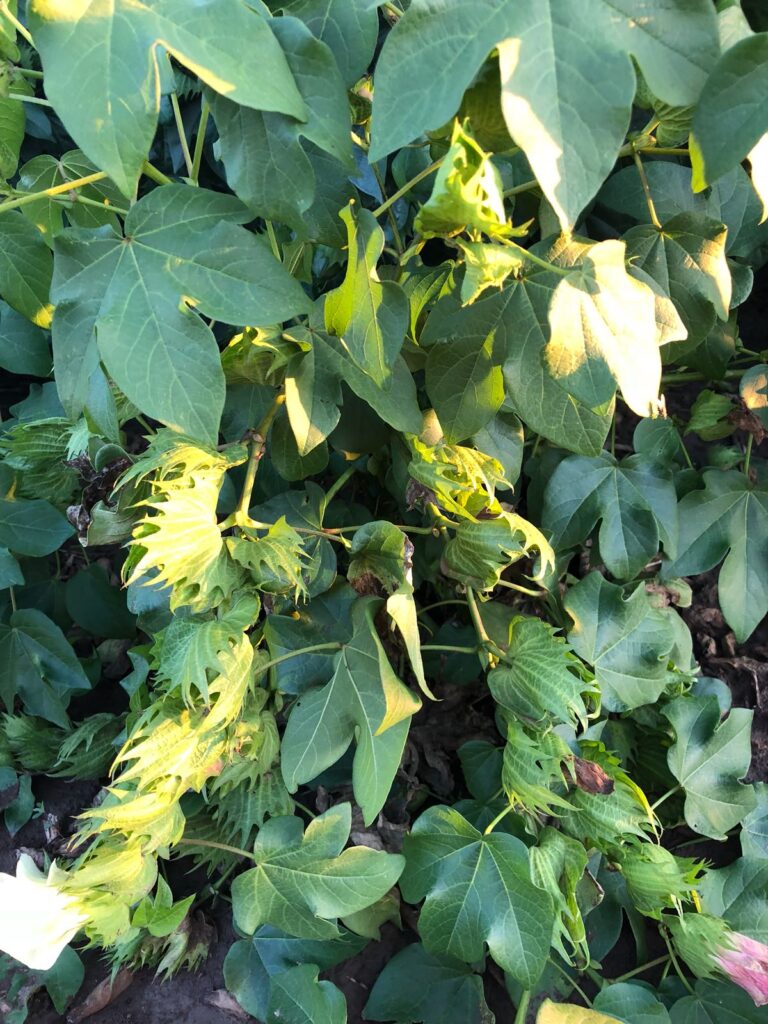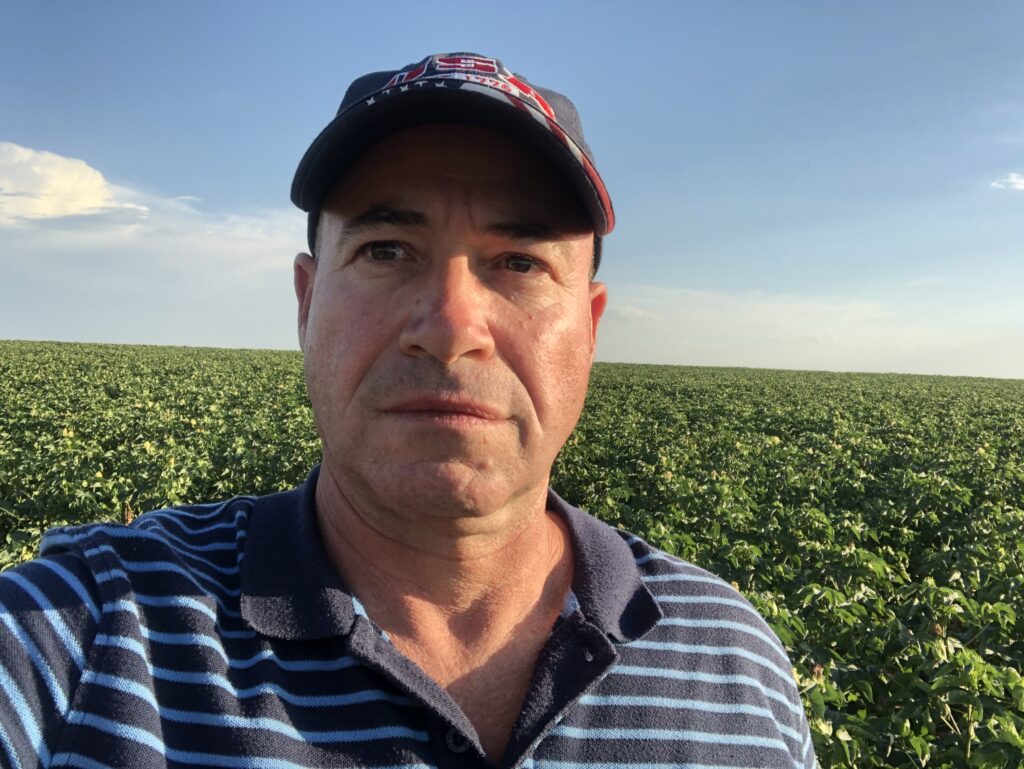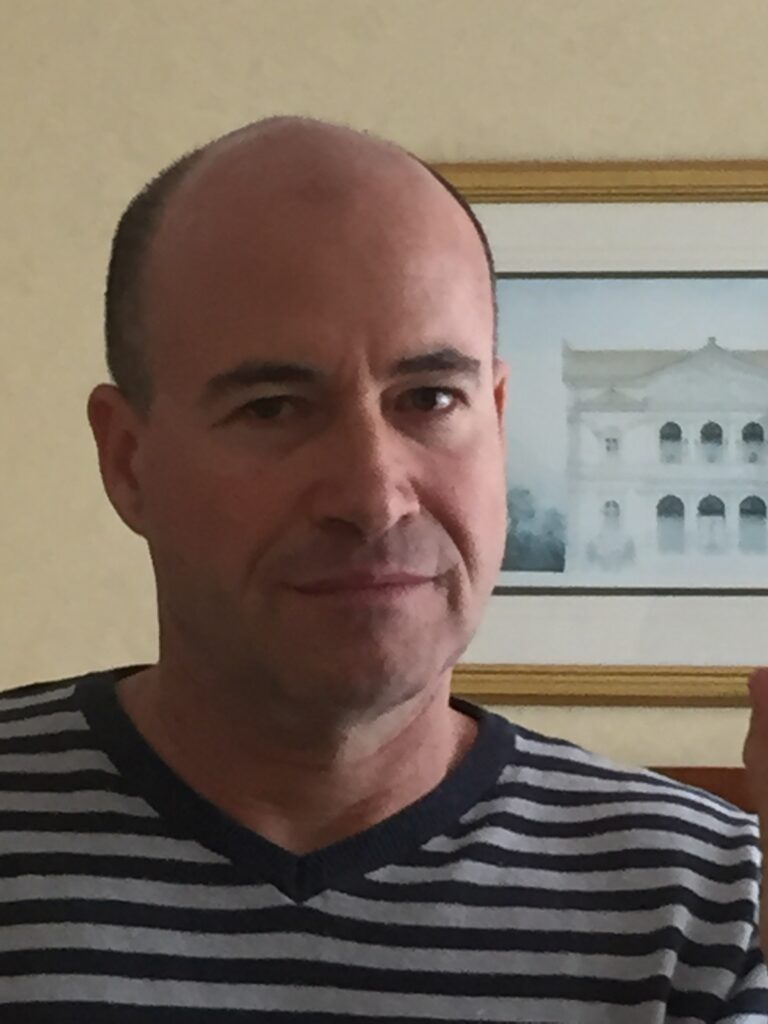Cotton breeder Ido Tal discusses a new model for selling seed
Ido Tal is the founder of Texas Seeds, a cotton seed company dedicated to breeding Pima cotton seed for regenerative operations. He has operations in the United States, Mexico and Israel.
Acres U.S.A. How does your by-the-acre model for seeds work?
Ido Tal. That’s the business model. I really think it’s the way it should be. We work in America, in Mexico and in Israel; in Israel, nobody pays us by the pound or kilogram or bag — they only pay us per acre. That means that there is mutual trust between us and the customer. The customer could say they planted 1,000 acres, or they could say 800. Whatever they say, we send them the invoice according to that. We know exactly how many bags they got from us, but we can’t really know how many acres they planted or replanted using our bags.
We began doing this because I knew that the best kind of business was one where there’s mutual confidence between us and the customer. Every company in the world wants customer confidence — to be in the heart of their customers — but they often don’t do it themselves! When we say to the grower, “How many bags do you need?” and we don’t charge him per bag, and then he just lets us know how many acres he planted — that means that we trust him.

Acres U.S.A. What’s your strategy for charging per acre as opposed to per pound?
Tal. I want to let growers decide for themselves how many seeds per acre — what population — to plant to get maximum results. I didn’t want them to be influenced by seed costs. So I decided that we would charge the same cost whether they plant a high population or a lower one. The grower doesn’t have to pay extra for a second planting, because they already paid for the acre. If they do their first planting and they only get a half stand, they have a decision to make — to continue with it or to replant. They can make all of those decisions without thinking about the seed cost. So they can do it fast and well.
We didn’t start this way. We used to sell seed by the bag or by the pound, but I felt that there was a conflict of interest between us and the customer. A grower would tell me, for example, that maybe they needed more bags of seed, because they had lost some of their crop to hail. And since we were selling bags, I was happy. I shouldn’t be happy for something negative like that! But, since we changed that and started charging by the acre, I’m with them! I’m aligned with the grower. I’m not against them; I’m with them.
Acres U.S.A. And have you been profitable in selling seed this way?
Tal. Yes, much more than before. Because it’s easier to enable good results for growers this way. Before, maybe they would have two or three bad years, because they would hesitate before replanting. Now they can also consult with me much more freely. I tell them, “Let’s try a second planting,” and they know that we will not get any extra payment from this second planting, so they know that I’m objective. Doing it this way shortens the distance between me and the customers.
Acres U.S.A. Have there been other benefits in terms of your breeding efforts?
Tal. Yes, I think it has helped me with breeding. The good connection with the growers helps me in many aspects of the breeding. I get better feedback from them, because I’m part of their group. I’m a supplier, but I’m part of them — we are all working on the same project. We have economic challenges, climate change, and many other challenges, but we work together. The information I get back from the growers is much more accurate, and that information is very important for me as a breeder.
And if the business is more profitable, then we have more resources for breeding work. The growers know that our profitability will go back to them, because they’ll get better cotton varieties, and therefore they’ll get better results.
Acres U.S.A. What traits have you been breeding for? Are you trying to breed for organic production?
Tal. In the beginning, I wasn’t trying to breed specifically for organic production, but, in essence, yes. Ever since I started breeding I’ve tried to find natural solutions to pest and soil disease. Of course, I was just thinking about spraying fewer chemicals.
We started producing organic Pima cotton in Israel twenty years ago — in 2002. I was very positive about it from the beginning. It was a very small part of the business economically, but it was important for me, because I saw that it could change everything.

Organic is like the leading animal in the herd. We were able to dramatically reduce our spraying of chemicals in conventional cotton because we realized it was not necessary in the organic fields. It was always in my head from the start — that organic would lead to a change in the whole industry. I would be happy if one day the whole industry were organic. It will take time, but I don’t think there’s any reason that it couldn’t happen.
Acres U.S.A. What steps are necessary for that to happen?
Tal. More and more success. People watch their neighbors and their friends. If it doesn’t look so complicated, if it works, then it’s like a fire in the forest — it moves fast. We just need some time for this to happen. We need cooperation with the textile industry and the retailers. We need good PR of regenerative organic methods. We need to publish summarized data about soil in regenerative fields compared to standard fields. We need every US citizen to know about it. We need to create life in the fields, we need to regenerate living soil with healthy biology, and we need the public with us. After all, we are working for them. It’s their life, their environment, their America that’s in danger.
For example, I work with a farm in Israel that’s growing some organic Pima. Pima is an extra-long staple cotton. Right now it makes up 2 percent of cotton production worldwide. It’s the most expensive, highest-quality cotton. Most of it is grown conventionally. In Israel, we grow almost all Pima — close to 100 percent. So this farm grows the niche of the niche — organic, regenerative Pima. The growers told me that this year he got better yields in the organic fields than in the convention ones. And of course the price is much better and the costs are much lower. Today, regenerative organic Pima cotton is white gold, and farmers who grow it according to the best know-how will have a huge profits. Some of them will have a marginal net profit of 50 percent, if not more!
Acres U.S.A. What are some things organic growers are doing to reduce spraying? Cotton is one of the most sprayed of all agricultural products, right?
Tal. Unfortunately, yes. But not in Israel. Over 90 percent of the cotton acres in America are GMO. It’s terrible — growers use a lot of chemicals. Roundup, 2,4-D, Dicamba.
But Israel is a non-GMO country. There is not even one acre of GMO cotton here. And for this reason, the soil is much better than in many places in America. And that’s the reason that we get higher yields — because the soil is the key factor. We do grow cotton conventionally — but the chemical use is much less intensive. I encourage everybody to minimize synthetic chemicals.
Acres U.S.A. Why does Israel grow 100 percent Pima cotton? Or, why do we grow 97 percent regular cotton here in the states?
Tal. Pima needs a longer season. But there are ways to do it shorter than it is now. If the soil is very fertile, it grows faster. If there aren’t mineral and nutrient deficiencies, everything moves faster. So, it’s not impossible to grow Pima cotton in America — but in most American fields it’s impossible with the situation right now, with very infertile soil and the problems of climate challenge, which have been created in part by this way of agriculture.
When we started growing cotton in Israel, in the ’50s-’60s-’70s — before my time — we sprayed heavily. Today it’s nothing compared to those days. Now we have better weather, better rains, and much better soil. I think we are on the way up.
Acres U.S.A. How much has desalination technology helped with that? Water isn’t really an issue anymore, correct?
Tal. Yes, we put irrigation everywhere. This has a good effect on everything — the biology in the soil, everything. It’s desalination, but before desalination — in the ’80s and ’90s — we recycled the city wastewater. In the last 10-15 years we’ve developed desalination as the source of water, especially for cities. The big cities use desalinated water, and then we treat that water and send it to the farms. There is plenty of water, and it’s not so expensive.
But I think it is possible to grow more Pima in the United States. I think it would be easier to do regenerative cotton in all of America. Pima could be a much bigger volume than today — maybe 20 times more. But we need to change the whole concept of how we grow in America. The way it works now, growing high-end cotton will never work. We need to do everything the opposite way. It’s like the Seinfeld skit where George realized that all of his life his instincts were wrong, so if he tried to do everything the opposite way, then everything would work out for him! Growers need to do the opposite of what they’re doing now!
Acres U.S.A. What does that look like? Nutrient management, of course. Not spraying as many synthetic chemicals. Focusing on soil health. What else? And specifically in terms of your breeding — what are you doing in terms of breeding to be more regenerative — besides not being GMO?

Tal. I will give an example of what I think people should do. Take what James Johnson is doing in New Mexico. He’s growing organic Pima and getting fantastic yields. And it’s just the beginning — he hasn’t been doing this for forty years. He’s going to start grazing livestock in his fields. He uses cover crops. He uses plant sap testing and specific nutrition management. He manages for biology in the soil. He does minimum tillage. I think that’s the direction growers should be going.
As for my breeding work, I’m trying first to make a personnel connection with growers. Driving in the fields, talking, sharing ideas — I learn a lot from them, and maybe they learn something from me. This is the way to do it.
As a breeder, I’m focused on high-quality cotton. I don’t believe at all in GMO. I think it’s like heroin — it’s bad for the person and it’s bad for society and it’s very bad for the economy. It’s bad for everything. GMO is totally unnecessary. Like I said, in Israel we don’t have any GMO cotton, and we have much fewer problems and much higher yields. I’m actually amazed that GMO agriculture is still working.
Acres U.S.A. Yeah, nature’s pretty resilient, in spite of what we do to it.
Tal. Yeah, but it’s not really working. I work with growers in Texas, and two years ago someone from an insurance agency told me that the next year we were going to have a problem, because the last good growing year was 2010. With 10 bad years on the records, it was going to be a problem for the insurance records. So much government funds have been spent on the problem, but they are creating the problem! Their money supports all the bad things.
Acres U.S.A. How can a more regenerative way of cotton be implemented — specifically in terms of seed?
Tal. There are actually a few different ways to do it. One is that we will give growers seed and they will pay us by the acre — like we’re doing it right now in Israel. Maybe we could do this for new growers. Another way is that growers would be able to produce seed for themselves using our varieties and would just tell us every year how many acres they grew. Doing that will generate an improvement in the seeds — in the biology inside and outside of the seeds.
Acres U.S.A. Can you talk about pollination? How likely would it be that you get pollination drifting in from some variety that the grower doesn’t want?
Tal. They would probably get pollination from GMO seeds. But maybe they’d only need to buy new seed every few years. They would start over with 100 percent clean seed — because it’s from Israel, where there isn’t any GMO. I would be able to support the organic standard; probably for at least two or three years it would work for them.
The other way to implement regenerative cotton is what I call a Pima cotton orchard. I really think that cotton could be grown like a pecan orchard or a pistachio orchard. It could be grown as a tree that lasts for maybe 20 or 40 years. Every year we would harvest and then prune it; but we would not need to start from scratch.
Acres U.S.A. Making cotton a perennial plant.
Tal. Right. What would happen if we did this? Fruiting could happen faster. Even places like the panhandles of Texas or Oklahoma, or Arkansas, would be warm enough — because it would be a Pima tree. Maybe we’d only need 100 days to grow Pima cotton. Problems like hale and other climate problems would be much less serious. I’m thinking it could grow up to 60 inches tall and then be cut after the season to 48 or even 40 inches.
And then we could use sheep and cattle to graze around the cotton trees after picking — to eat whatever’s left, as well as the cover crop. We could plant cover crops between the trees and between the rows. All of those things could improve the soil fertility and the water absorption capability of the soil.
Acres U.S.A. Why hasn’t this been done before? Is it being done in Israel?
Tal. There’s a Jewish law from the Bible that the seventh year should be a sabbath of the land — in the seventh year, we shouldn’t plant. Not all growers follow these rules, but some of the orthodox growers do. They don’t plant at all in the seventh year; they leave the plants for two years. It was done successfully many years ago.
Acres U.S.A. And then every 50 years for the Jubilee, right?
Tal. Maybe we need to do that as well — every fifty years! But every seven years at least. It works this way — cotton was grown as an orchard plant everywhere 100, 200 and 400 years ago — before it came to America.
My opinion on why it’s not happening right now — maybe part of the answer — is that the seed companies want to sell seeds! And they don’t believe in the growers. They don’t believe that the growers will pay them royalties.
In this model, growers could use the technology — the DNA — in a much cheaper way. It wouldn’t cost them as much as now — when they’re buying bags every year. I think it’s stupid to buy new bags of cotton seed every year. It’s just because of problem of mutual confidence between the grower and the seed company. It’s really something that we could find a better solution to — like paying the seed company a royalty for the technology, or with cotton orchards.
There are about 12 million acres of cotton every year in America, depending on the year. The average cost of the cotton seed, per acre, is $60 at a minimum. That’s $720 million a year, if not more. It would only cost two or three million a year to pay a breeder and a seed company to develop seed if we went to a cotton orchard system, as well as if we went to a royalty system. And this would reduce the total risk too.

















